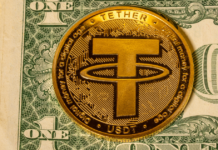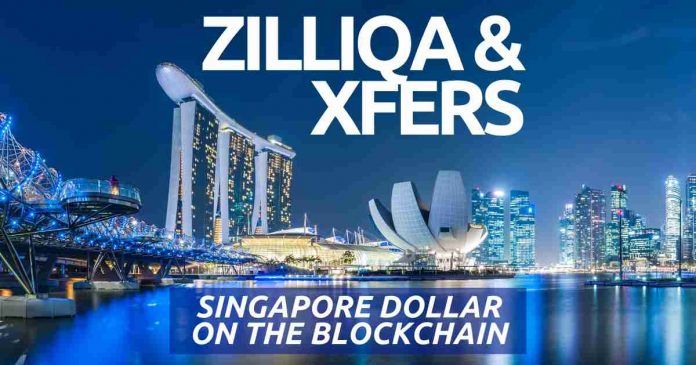The digital landscape in Singapore has mostly been supportive of blockchain and cryptocurrencies. By bringing the Singapore Dollar (SGD) to the blockchain in a regulated fashion Zilliqa and Xfers have opened crypto adoption gateways for locals.
For our curious readers, we at Altcoin Buzz interviewed Zilliqa and Xfers to understand how significant is this and what lies ahead.
Zilliqa Talks
Q. Why is getting the SGD on the blockchain significant? In terms of regulations.
Singapore, often hailed as one of the most forward-thinking jurisdictions around the world when it comes to progressive financial regulations, is no stranger to blockchain-related developments. Institutional explorations into blockchain span across early developments such as Project Ubin, a multi-year, multi-phase project spearheaded by the Monetary Authority of Singapore (MAS) that has explored areas including decentralized interbank payments and cross-border payments and settlements.
Most recently, MAS expanded its Payment Services Act, enabling cryptocurrency firms to apply for a license to operate and even expand their businesses in Singapore. Moreover, they provided even greater regulatory clarity for these companies looking to cater to local consumers.
Given such developments taking place on an institutional level, bringing the Singapore dollar onto the blockchain is but a natural progression for the country’s digital asset landscape. With the government taking a positive, albeit cautious approach to financial innovation, XSGD provides an entryway for local consumers looking to explore the benefits of digital assets with much-needed regulatory assurances.
Q. What was the process of getting SGD on the blockchain? How tough is it for someone else to do the same?
For someone to launch a stable coin on Zilliqa, technically it is as easy as using our ZRC2 standard, which is a fungible token contract to get started. However, based on the companies business model and compliance requirement, more work may be required. For instance, on our project with Xfers, we have linked up with Elliptic to not only support $ZIL but also the ZRC2 standard for chain analysis and AML. We are very glad that XSGD is the first ZRC2-compliant contract to be supported by Elliptic.
Q. How is XSGD for SGD different from USDT for USD?
As a stablecoin fully collateralized by and pegged 1:1 to a fiat currency—in this case, the Singapore dollar—XSGD can be likened to existing stablecoins catered towards the US market, be it USDT or USDC. With the majority of successful stablecoin projects pegged to the US dollar, XSGD provides a strong alternative for the digital assets settlement market in Singapore as well as in the wider region.
Another differentiator that sets XSGD apart from existing stablecoins in the market is its intended utility which extends beyond mitigating currency volatility on cryptocurrency exchanges. XSGD was launched as part of StraitsX, a stablecoin initiative in collaboration with Xfers, a fintech payments provider that has been approved by the Monetary Authority of Singapore as a Widely Accepted Stored Value Facility (WA SVF) and holds a Major Payment Institution license for e-money issuance. With Xfers’ compliant offering and existing base of over 500,000 enterprise partners and users, XSGD benefits from immediate real-world utility across applications spanning payments, funds settlement and transfers, as well as e-commerce.
Q. What is the use case for $ZIL in this?
The XSGD smart contract and the stablecoin itself have been deployed onto the Zilliqa blockchain, therefore, all transaction fees or gas, are denominated in our native token, ZIL. As XSGD continues to gain traction, more transactions will be taking place across the network to the benefit of traders and token holders alike. With XSGD setting an example for all prospective enterprise-grade projects and stablecoin initiatives looking to select a sufficiently robust and secure blockchain platform, we can hope to see more developers and more users flocking to the network.
Q. What are some plans for the Zilliqa for the next 6 months? Do you share some exciting news?
In the past few months, we’ve been focusing on setting up resources, frameworks, and tools that would add to our network’s security as we focus on traditional applications in the wider financial services space. Recent partnerships with firms such as ChainSecurity, Elliptic, and Incognito have addressed the need for greater security, KYC and AML compliance measures, as well as for increased privacy on the network. With our renewed emphasis on fintech-centric applications through our work with Xfers, our goal is to pioneer the open finance agenda across emerging markets across Southeast Asia, enabling users and businesses to benefit from greater transparency in their financial transactions. While we cannot share anything more concrete at this time, you can expect to see more exciting announcements in the months to come!
Xfers Talks
Q. Why did you choose Zilliqa to launch this?
StraitsX intends to address Southeast Asia’s needs for digital assets liquidity. Zilliqa with its strong regional presence was the most obvious partner for our XSGD stablecoin pilot.
Q. How is the regulatory framework in Singapore looking towards Cryptocurrencies in the next 1 year?
Singapore enacted the Payment Services Act earlier this year and most Digital Payment Tokens (DPT) service providers are now finalizing their licenses application under the grace period. The Digital Assets landscape in Singapore may or may not change significantly this year depending on the actual licensing process outcome.
Q. How do you think launching this affects the banks if XSGD was to become widely used?
The 2 or 3 years of experience of the various USD-denominated stablecoin projects that emerged have shown that the digital assets settlement market is small but growing. We see XSGD as a complementary product to both existing Xfers’ services and other banking services available in the region.
Q. What are some of the challenges you faced while working with companies like the CDC. Why was XSGD first launched on its platform?
Crypto.com has been leveraging our fiat on-ramp and digital wallet capabilities for some time now and was equally enthusiastic about the perspective of further collaboration on the XSGD launch. We are glad that they chose XSGD to enhance their product offering.
Q. What are the future plans for XSGD, will local retailers except this instead of or in addition to NETS, VISA, MC, etc?
The XSGD launch on crypto.com is another important achievement for the StraitsX stablecoin pilot. We intend to keep communicating about some other equally important milestones in the coming weeks and months.
About Xfers:
Founded in 2015, Xfers is Southeast Asia’s leading Fintech platform for digital businesses, enabling open banking for Southeast Asia. It boasts a range of last-mile financial rails including the Xfers Wallet Kit, Fiat-to-Crypto ramps and Virtual accounts. Today, Xfers and its partnering merchant’s process over US$150 million for over 10 million unique active users every month across Singapore and Indonesia. In Singapore, Xfers is the holder of a Major Payment Institution license for e-money issuance under the new Payment Services Act. In Indonesia, Xfers offers a range of API-driven financial solutions that include Channeling of loans, Disbursements, and Virtual Accounts. Xfers works closely with regulators to ensure that all its products and services are fully compliant with the highest regulatory standards.
About Zilliqa:
Zilliqa is a high-performance, high-security blockchain platform for enterprises and next-generation applications. Developed through academic research and helmed by a team of experienced scientists, engineers, venture creators and leaders in the financial services, Zilliqa addresses limitations in scalability and security, enabling real-world usability across a variety of industries, including finance, digital advertising, and gaming. In 2019, Zilliqa became the first public blockchain platform to be built on sharded architecture, with smart contracts written in the platform’s secure-by-design programming language, Scilla.



























